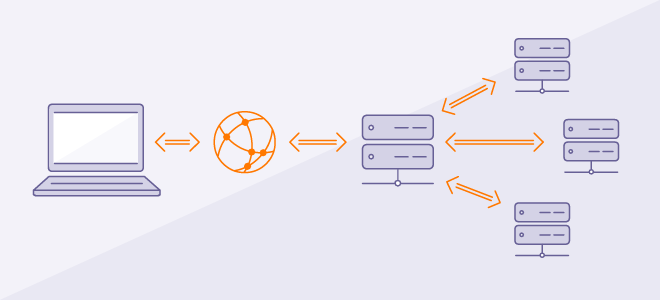Why You Don’t Need a Load Balancer When Reverse Proxies are involved ?
 Nkoa christophe
Nkoa christophe
Modern reverse proxies often come equipped with traffic balancing capabilities across multiple servers. So, is a dedicated load balancer still necessary when using reverse proxies? Before going futher let us define load balancer and reverse proxy.
A reverse proxy is a server that sits between client devices (like web browsers) and backend servers. Its primary function is to direct requests from clients to the appropriate backend server and relay the responses back to the clients. Essentially, the reverse proxy "hides" the identity of the backend servers, acting as an intermediary. In the other hand a load balancer is a system that distributes network or application traffic across multiple servers to ensure reliability and optimal resource usage. Its main job is to improve the performance and availability of applications by balancing the workload among multiple servers or nodes.
The reverse proxy is used to:
Help to protect backend servers by masking their identity and preventing direct access from clients.
cache data to speed the client queries and reduce the load on backend servers
Compresses or optimizes the content before sending it to clients, improving performance.
Distributes incoming traffic across multiple backend servers, ensuring no single server is overwhelmed.
The load balancer is used to:
routes the client requests to different backend servers to prevent any one server from becoming overloaded.
ensure high availability so that If one server fails, the load balancer automatically directs traffic to other functioning servers, ensuring that the application remains available.
As the demand for an application grows, a load balancer helps scale the system by managing multiple servers efficiently.
A reverse proxy and a load balancer serve related but distinct purposes, and while some reverse proxies also perform load balancing, they are not exactly the same.
Load balancers tend to offer more sophisticated algorithms and performance-related features, such as weighted routing, advanced health checks, and geographical-based routing, which go beyond the capabilities of a typical reverse proxy.
Load balancers often have more advanced security features such as Distributed Denial of Service (DDoS) protection, rate limiting, and more granular control over traffic inspection. Reverse proxies typically have basic security controls, but load balancers provide better protection against attacks and ensure service continuity.
Load balancers can handle Layer 4 traffic (TCP/UDP) as well as Layer 7 (HTTP/HTTPS) traffic, making them versatile. A reverse proxy mainly works at the application layer (Layer 7), forwarding HTTP requests. For applications requiring TCP/UDP load balancing (e.g., databases or gaming servers), a load balancer is necessary.
Many cloud providers offer advanced load balancers with cloud native features integrated with other cloud services, providing autoscaling, global failover, and direct integration with other services (like storage, databases, etc.).
So using both a reverse proxy and a load balancer can improve your system in many ways:
Separation of Concerns: You can offload different tasks to specialized systems. The load balancer focuses on distributing load, while the reverse proxy handles things like SSL termination and URL routing.
Redundancy and Failover: If you have multiple reverse proxies, a load balancer can ensure that traffic is spread across those proxies, creating redundancy. If one proxy fails, the load balancer can route traffic to a healthy one.
Using both a load balancer and a reverse proxy is crucial for creating a scalable, resilient, and high-performance infrastructure. A load balancer ensures efficient traffic distribution across multiple servers, providing advanced features like health checks, failover, and session persistence, while enhancing reliability and availability. On the other hand, a reverse proxy optimizes internal routing, handles SSL termination, caching, and enhances security at the application layer. Together, they create a robust system that improves performance, supports large-scale applications, and ensures continuous service, even under high traffic or server failures.
Subscribe to my newsletter
Read articles from Nkoa christophe directly inside your inbox. Subscribe to the newsletter, and don't miss out.
Written by
